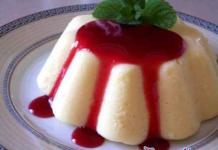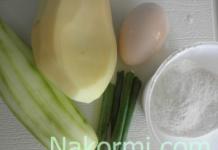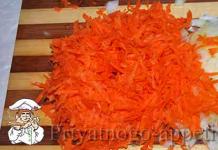Motorists or builders will not have the desire to age metal, but craftswomen and designers now very often resort to this technique in order to obtain interesting details in interior design or decorative elements. The surface of aged metal acquires an interesting structure and various color shades - roughness and play of colors give the product solidity and originality.
Artificially aging metal is quite simple. In an elementary case, you can put it in a place with high humidity and after some time (weeks will pass) the product will be covered with a layer of rust and will look like antique. The method is simple, but time-consuming, so at the moment Most often, various chemicals are used to age metals: nitric acid, bicarbonate of soda, drying oil or active acids. Experts are constantly finding new ways to decoratively age metal, but the most proven and accessible recipes have come to us from ancient times.
An important point in this process is the need correct application chemicals to certain metals. And since we are talking about aggressive substances, when aging metals it is necessary to use means personal protection– gloves, glasses, respirators.
Metal aging technology

Method for rapid aging of metal products
Often, for various creative ideas, antique buttons, needles, pins, nails, horseshoes, etc. are needed. You can quickly age such metal products using vinegar (1/4 cup) and salt (2 tablespoons).
- Mix both substances and immerse the metal part in the resulting solution.
- The composition is mixed, covered with a lid with holes and left for 12 hours.
- Then the parts are taken out and dried on newspaper.
- If excess rust has formed, you can sand it off with sandpaper.
To work with the solution, it is better to take glass or plastic containers that are resistant to chemicals.
Mix the ingredients with a wooden, plastic or porcelain spoon.
A container of larger volume is required, since after immersing a metal part in the solution, the liquid will begin to foam.
If work is not carried out outdoors, a well-ventilated area should be used.
Age as decoration: technology artificial aging make metal fittings more expensive and attractive.
- 1 of 1
In the photo:
It’s a paradox: the whole world is inventing ways to protect metals from corrosion and other signs of aging, but designers, on the contrary, are studying and intensively applying methods of artificially “aging” them. There's nothing you can do about it - fashion.
Important Details
Some pieces of furniture require metal parts to be vital. However, sparkling chrome or nickel clearly does not suit an empire chest of drawers, a chandelier in the style of one of Louis and a “grandmother’s” sideboard.
The fittings here need to be appropriate, with a touch of time. The scope of its application includes both historical stylizations and the “shabby chic” popular today.
Metal handles, inserts, overlays that are not of the first youth emphasize the character of the thing, and a lamp or mixer can “make” the entire interior. If the plaque of time has not had time to appear naturally, it is created artificially. And there are several such ways.

- 1 of 7
In the photo:
To make antique furniture, you need not only to reproduce the model according to the drawings, but also to artificially age its surface and equip it with patinated metal fittings.
Technologies
Patina is a natural film that appears under the influence of environment, - imitate by applying special compounds to the metal surface, usually containing acids and oxidizing agents. Small parts are immersed entirely in the solution, while larger parts are patinated with a swab or brush. Combination different compositions and different metals gives different color effects. Craftsmen know: bronze looks best with a green tint, copper with a chocolate tint, and silver with a smoky blue tint.
Rusting. In some cases, during the patination process, a rusty coating appears on the metal that needs to be cleaned off. Unless, of course, the manufacturer intends to make rust a decorative element - this also happens. You can also achieve rapid rusting by immersing a metal product in a mixture of hydrogen peroxide, vinegar and ordinary salt.

- 1 of 5
In the photo:
One of the methods of artificial aging is the use of rust effect in finishing metal surfaces.
Heat treatment. Metal placed in a furnace or under gas burner, begins to consistently change color. Having brought the product to a certain stage, it is abruptly stopped heating it; in this way, even sections of one part can be painted in different shades.
The metal smoking method is based on the use of smoke. Soot particles firmly adhere to the surface of the varnish-coated metal.

- 1 of 5
In the photo:
Not only metals are baked in the oven, but also wood - most often oak, ash, cedar or acacia. After heat treatment, the soft beige mass acquires a pleasant chocolate shade. This technology is actively used for the manufacture of parquet and designer furniture.
Soft and precious metals, which chemical exposure contraindicated; processed using pigmentation method (using special paints and varnishes). In this way, they imitate the textures of other materials or achieve an aging effect.
In the photo: chandelier 4029 PL4 from Masiero factory.
Pigmentation. There are materials that, due to their properties or high cost, few people would risk dipping into a chemical solution or putting in an oven. Soft metals do not tolerate chemical patination well, and gold plating is too expensive for risky experiments. In such cases, traditional or special paints and varnishes come to the aid of craftsmen. They are applied to the metal in a thin layer, and then removed from the bulges, but remain in the recesses.
Metals
Brass and copper. Sodium hyposulfite gives brass its brown and black tints. Using a mixture of ammonia and copper oxychloride, you can successively achieve olive, and then black and brown colors- it all depends on the time the metal is in the solution. Potassium sulfite will turn the brass piece orange-red. An aqueous solution of zinc chloride and copper sulfate will turn the copper red-brown. The so-called “sulfur liver” will give copper and brass a noble gray tint.

- 1 of 4
In the photo:
Decorative inserts and overlays made of aged brass adorn furniture pieces that imitate antique designs; it is used to create exclusive accessories and handmade tableware.
Steel. A solution of hyposulfite and lead acetate will cover the steel with a bluish patina.
Aluminum. Aluminum is aged by smoking and calcination - this soft and ductile metal does not lend itself well to chemical patination. And most often it is simply tinted.
Bronze. Bronze parts are moistened with sulfate preparations and then oxidized in air - and so on several times. Using different preparations produces different colors, from green to red.
Examples of using aged bronze
Precious metals. Precious metals can also be patinated. But we are unlikely to see solid gold in modern furniture. Most likely, the mirror frame or dresser handle will be covered with gold foil. An aged look is given to it using bitumen or bituminous wax.
Silver parts are given a warm tint using varnishes of amber or reddish colors. In addition, the “Byzantine method” is used to patina silver using molten salts of platinum group metals. An electrochemical reaction and subsequent mechanical processing can give silver a pink, greenish or blue tint.

Comment on FB Comment on VK
Also in this section

To a strict European eye, American interiors are characterized by unbridled eclecticism. However, it also contains certain principles that allow you to create cozy home with a bright personality.

Artificially aged furniture, unlike antique furniture, is quite affordable, which is why it is very popular. However, few people know what techniques are used to age wood.
Hello, dear readers, I suggest you study the technology of aging metal, thanks to which you can add sophistication and antiqueness to completely simple, ordinary decorative items.
To do this you will need a cup of hydrogen peroxide and a cup of vinegar plus two tablespoons of salt. Pour all this homemade potion into a spray bottle and spray it on a metal object. The peroxide contained in the potion accelerates the oxidation process of the metal, transforming it into an antique aged by time.
Let's take a closer look at the process of aging metal.

You can cover a ball with copper coins and spray it with a homemade solution according to Maria Neman’s recipe for oxidizing the metal. Any copper surface aged in this way, covered with greenery and a turquoise tint, will look elegant thanks to several approaches of splashing this solution on the surface with intermediate drying

Well, let's look at how galvanized metal will change
Galvanized metal itself is difficult to oxidize as it is designed to resist oxidation. But the silk solution will help to do this aging trick, hgblfdfz rusty effect.
Try mixing ammonia and salt with a little soap to create a mild etch. But it's okay to use a strong toilet cleaner. Remember to carry out this procedure in a ventilated area and with safety glasses.
Voila! The bucket turned into a unique antique masterpiece!:)

based on materials from the website-fleamarketgardening.org
Now let's look at the technology of how to give metal a natural craquelure.

This effect was usually achieved from several applications of paint, but with a significant period of time. Now you can create the same effect easily!
You can get this effect now by applying a thin or thick coat of Elmer Waterproof Wood Adhesive to one coat of paint. And on top, in a tack-free state (this is when the glue has not yet completely dried, but does not stick to your hands), another contrasting layer of paint is applied.

For the top coat of paint, you can use a swamp color of paint and add a “patina” or even “faux moss” And for the first coat of paint, you can use a terracotta color, which will give it its own special beauty and sense of time. Or you can apply the top layer with glaze, using both shades, which create a unique effect in separate strokes.
All your creations with imitation of aging over time, you can decorate your garden in an original way.
Good luck with aging your metal surface :)
How to age metal
Metal surfaces and details are very popular in interior design today. They are widely used for decorating furniture and accessories. I especially liked the so-called aged metal. That is, not a smooth shiny surface, but a rough one, with different color shades. Such decorative elements give the interior or clothing items a certain solidity, standing the test of time.
Active acids or bicarbonate of soda
- nitric acid
- drying oil
Sponsored by P&G Articles on the topic "How to age metal" How to check points on a Svyaznoy card How to find the OKPO code How to sew stars on shoulder straps
Modern chemistry offers enough large number methods of decorative metal processing. Many recipes have been known since ancient times. Choose a method depending on the desired results, as well as the type of metal that you are going to undergo decorative processing.
Before starting to work with the material, clean its surface from any contamination. The results of your work will largely depend on how carefully you go through this stage. The product can be carefully annealed to remove any residual resin or any other impurities. If you are going to work with brass or copper alloys, bleach them in a weak solution of sulfuric acid, and if you are going to work with iron, use sulfuric acid. Bicarbonate of soda works well for aluminum products. After processing items, rinse them well and clean them with a wire brush. Now proceed directly to the finishing.
To age copper and brass, use nitric acid. Remember that nitric acid is dangerous because it emits fumes. That is why working with it indoors can lead to serious consequences. Carry out any work with nitric acid outdoors. To work you will need a cotton swab. Wrap it around a wooden stick, and use it to apply nitric acid or its solution to the metal surface. Once the reaction is complete, heat the object and continue heating until the evaporation reaction stops.
The color of the surface will depend on the concentration of the acid, the time of treatment of the metal surface, and the degree of heating after treatment.
When working with iron products, immediately after cleaning the surface, apply drying oil to them. After that, heat to 300 or 400 degrees. If you use an oven, the surface tone will be more uniform. If you want to give the surface a lighter tone, use nitric acid.
If you plan to age or simply decorate an aluminum surface, prepare kerosene or soot for the procedure. This will best highlight all the features of the relief and give the surface originality.
When painting metal products, two goals are pursued: protection against the formation of corrosive areas and giving the metal an aesthetic appearance. When implementing the last task, sometimes it is necessary to cover the surface in 2-3 layers. But the end result may not always be just painting. Sometimes metal products need to be given original decorative effects, for example, the appearance of an aged object. For this purpose special technologies are used. Let's try to figure out how to paint antique metal and what is required for this.
You can achieve the effect of aged metal by using the main method - aging through the creation of a patina and the formation of abrasions. Patina is applied with special paints, but for metal, acrylic-based metallic compounds are more often used. In stores today there is a wide range of such paints; in addition to their decorative function, they also perform a protective function.
Available to choose from acrylic paints for aged metal, namely:
- brass;
- bronze;
- copper;
- gold.

Thanks to modern technologies, an aged effect can be given not only to metal surfaces. Often this painting is performed on plastic, wood and plaster products.

The aging process is completed by applying a final protective layer. For this they often use:
- acrylic based varnish, which has high degree gloss;
- very durable polyurethane-based varnish with a gloss level of up to 50%;
- polyurethane-based varnish with a matte effect.
How to age metal yourself?
The choice of method for creating an interior style, which assumes the presence of traces of antiquity in the design, is quite wide. For connoisseurs of this style, it is not always affordable to purchase real old items. The way out of this situation is to imitate ancient metals. How to properly paint antique metal with your own hands? Coloring is carried out in stages:
- Preparing the surface for painting. We get rid of dirt, rust and traces of grease by grinding and solvent treatment.
- Metal priming. In this way we achieve the formation of roughness on the surface for better adhesion of the paint. We choose a primer special for metal.
- Application of selected metallic paint. Experts advise performing the process using a regular brush, this way aging is achieved in the best possible way.
- Aging stage. When the paint has dried, cover the surface with a special craquelure varnish. It is after this step that the metal object becomes covered with cracks, which create the effect of an old product.

Important! If non-metallic surfaces are being processed, then it is necessary to take a responsible approach to the choice of primer composition to achieve reliable adhesion with metallized paints.

On video: master class on applying patina to forged metal.
Bronze painting
In the old days, many objects were made of bronze. Therefore, painting products in bronze will help to decorate the interior of the house in an old style. There are several technologies for coating metal with bronze. Let's consider the simplest options.
Giving a monochromatic effect
You can perform a single-color coating of metal with bronze as follows:
- First of all, we clean the old surface from dirt and rust. To do this, you need to clean it with sandpaper and then degrease it.
- To increase the adhesion of the dye to the surface, we perform a metal priming process. In addition to adhesion, the primer will help further protect the product from corrosion.
- At the final stage, we begin painting with bronze paint. It is necessary to apply 2-3 layers evenly. But each subsequent layer is applied only after the previous one has completely dried.

Achieving the effect of antique bronze
Decorative antique painting with a bronze effect is suitable for lovers of rare things. To do this, follow these steps:
- Preliminary preparation of the old surface is carried out according to the same rules as in the previous case. Also, do not forget to coat the product with a primer.
- After priming, one layer of bronze paint is applied to the surface. It is desirable that the composition be applied evenly, but for an antique effect it is better to use a brush.
- After drying, the bronze painted surface becomes covered with patina (paint of a darker color). It is applied to the recesses. Experts advise using a translucent patina. This allows you to adjust the shade of the bronze coating.
- The next stage is glazing, that is, processing with a brush that is barely moistened with light paint. The process is carried out on all protruding edges and corners. This aging method allows you to give the product the effect of wear and tear, which usually appears on metal over the years.
- Next, we wait for some time, allowing the applied materials to dry completely, and finally we coat the product with transparent varnish.

Antique Brass Painting
Textured metallized compositions can transform a product, giving it an imitation of brass. The processing technology is almost no different from those provided above. The surface is pre-cleaned, sanded and degreased. The technique used for aging is decorative painting brass look
The application process is performed as follows:
- Before applying decorative paint, the old coating is removed from the product. To do this, you can use a wire brush or sandpaper.
- The key to durability and reliability of painting is the primer. Use a compound specifically designed for metal.
- Brass paint is applied to the surface in one layer. You can age the resulting coating by painting it with craquelure. Burnt umber, which is applied very carefully using a dry cloth, will help enhance the effect. If excess is formed during the work, it must be removed before the substance dries.
- Finally, the surface of the painted and aged part is coated with a glossy acrylic-based varnish.

As you can see, designer antiquity is achieved in simple ways. When doing work with your own hands, paints that create the necessary effect of a bronze, brass, or copper surface help you get the desired result.


























